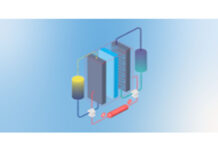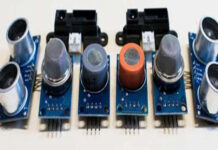The global robotic process automation market will grow at an extraordinary 33% CAGR from 2019 to 2029. Controlled airspace accounts for more than three-fourth of the global market and is expected to generate an absolute opportunity of roughly $3 billion between 2021 and 2031.
Organizations worldwide are identifying processes that can be automated. This is in response to the increase in productivity and efficient use of resources that robotic process automation offers. The global robotic process automation market will project an astounding 17X growth from 2019 to 2029. This can be attributed to the growing adoption of industry 4.0 technologies in modern manufacturing. On the back of benefits such as precision, capacity expansion, and significant reduction in time-to-market of products, robotic process automation is set for a sky rocketing growth trajectory.
Key Takeaways of Robotic Process Automation Market Study
- Service product types hold the leading market share of more than 58% of the total value. Enterprise organizations are looking for end-to-end services that ensure organization wide deployment of robotic process automation initiatives.
- Robotic process automation based on smart software meets the demands of small and medium enterprises. On the back of suitability and flexibility of deployment, the software segment will grow at an astounding 35% CAGR from 2019 to 2029.
- Consulting service segment will grow thirteen-folds during the forecast period. This can be attributed to the growing need for customized robotic process automation from companies.
- In terms of target clients, large enterprises hold a majority market value share on the back of increasing need of these organizations to expand their global footprint in highly competitive environments.
- North America maintains share-wide leadership with more than 1/2 of the total market value. Early adopters are at the forefront of robotic process automation owing to the increasing demand from consumers for precision product manufacturing.
- Banking, Financial Services & Insurance is the leading application segment for robotic process automation with over 1/4th of the total market value. This can be attributed to surging application of artificial intelligence and big data analytics in evaluating consumer candidature for financial services.
Get To Know More: https://www.factmr.com/report/4628/robotic-process-automation-market
“Cloud deployment of robotic process automation products is the next avenue for market players. With numerous stat-ups in the manufacturing industry, market players can position themselves for sustainable revenues by developing cloud deployment technologies. As these start-ups are cash strapped and prioritize cost efficiency, cloud based subscription models will fare well for market players during the forecast period.” -Says Fact.MR Analyst
Market Players Focus on Workflow Optimization
Market players can garner sustainable revenue streams by decreasing onboarding time and resolving scaling issues.
Organizations need to focus on reducing the friction surrounding robotic process automation by eliminating time consumption, and transforming effort-intensive processes.
RPA vendor selection criteria is moving towards products that offer detailed assessment of their ability to integrate, scale, and provide security and enterprise levels governance of manufacturing processes.
Upgradation of Workforce Skillset to Propel Market Growth
Market players must invest in developing product offerings that can measure increase in productivity post deployment. It is important for continued success, that all stakeholders of the client organization can understand and utilize robotic process automation technologies. Training and development of workforce skill sets will ensure frictionless adoption of robotic process automation. Hence, to garner increasing revenues it is important for market players to position themselves as a knowledge resource coupled with industry leading technologies. Industry 4.0 technologies will propel market demand for robotic process automation as organizations move towards hyper automation by leveraging the advancements in artificial intelligence (AI), natural language processing (NLP), and communication analytics.















